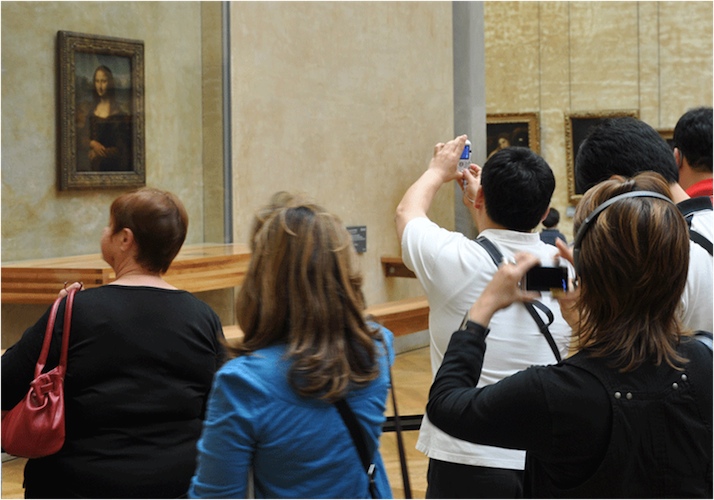63 Introduction (X)
Picture a dim room in the basement of a Detroit police station, lined with metal shelves: the shelves contain boxes and boxes of cold case files, evidence meticulously logged and categorized for no one to look at, documenting murders that will never be solved. Or the library of a small-town historical society in New Jersey: struggling with budget cuts, the board of directors has been forced to close its doors, locking its treasures inside, carefully curated and preserved but inaccessible to the public. Or a valuable data store encoded in an orphaned storage format: business records in a legacy database system that will not run on modern computers, census data on proprietary magnetic tape reels from the 1970s, your unfinished novel on a series of eight-inch floppy disks. You know the data is there, but you cannot interact with it.
An organizing system without interactions is a sad one indeed.
Interactions are the answer to two of the fundamental questions we posed back in Foundations for Organizing Systems: why and when are the resources organized?
The question of “why?” has been in the background (and often the foreground) of every chapter in this book thus far; whenever we select a resource for inclusion in an organizing system, describe it, or arrange it according to an organizing principle, we have an interaction in mind. We include a resource in our system because our users will need it; we assign a resource to one or more categories to help our users find it, understand it, and connect it with other resources in a meaningful way.
In this chapter we will pivot from design for interactions to the design of interactions—and to do this we must pause to consider the question of “when?” In “When Is It Being Organized?”, we contrasted organization done “on the way in” with that done “on the way out,” but this distinction is not always a particularly relevant one. Consider a bookshelf: if you do not organize its resources on the way in (i.e., when you put a book on the shelf), you cannot really organize them on the way out; you just have a disorganized bookshelf. When the time comes to retrieve a book, you’ll have to employ a brute-force linear search algorithm—reading every spine until you find the one you want, and it will not make the remaining books on the shelf any more organized.
But digital resources and networked organizing systems are an entirely different story. In fact, we argue that they blur the traditional boundary between the academic disciplines of “information organization” and “information retrieval”; with the World Wide Web, ubiquitous digital information, and effectively unlimited processing, storage, and communication capability driven by cloud computing architecture and Moore’s law, billions of people create and browse websites, blog, tag, tweet, and upload and download content of all media types without thinking “I am organizing now” or “I am retrieving now.” When people use their smartphones to search the web or run applications, location information transmitted from their phone is used to filter and reorganize the information they retrieve. Arranging results to make them fit the user’s location is a kind of computational curation, but because it takes place quickly and automatically we hardly notice it. Likewise, almost every application that once seemed predominantly about information retrieval is now increasingly combined with activities and functions that most would consider to be information organization.
Thus we come to the question of when a system’s resources are organized: we may apply the techniques of computational information retrieval to a set of resources that simply are not organized the way we need them to be in order to support our desired interaction. Maybe the system was designed poorly or for a different purpose than the one we are pursuing; maybe we are attempting to collect or aggregate resources from multiple organizing systems, each of which has its own separate purposes and design flaws. Regardless of the reasons, what we are essentially doing is reorganizing these resources on the fly, or “on the way out,” following many of the same principles and procedures we’ve covered in the preceding eight chapters of this book.
The fundamental interaction of any organizing system is accessing resources or resource descriptions, whether physically or digitally. Sometimes we must combine or merge resources or resource descriptions to access them effectively; this poses numerous strategy, design, and implementation challenges, as producers often use different identifiers, description or cataloging formats, and practices for similar resources. Different service providers use different technologies, have different information policies, and follow different processes developed in their separate organizing systems.
Some organizing systems have the power to determine the description standards that others must use. Walmart, the largest retailer in the United States, has devised an organizing system for its supply chain that supports access and movement of physical goods with maximal efficiency and effectiveness. This system saves the corporation money on inventory management and distribution, but to maximize savings, Walmart requires its suppliers to employ the same data model, follow company-set standards, and adopt new technologies such as bar codes and RFID tags that support the highly efficient interactions it requires.[1]
Other organizing systems must adapt to whatever their counterparts develop. Online retailer Shopstyle.com presents a typical ecommerce interface, allowing shoppers to browse a multitude of fashion and beauty products organized into familiar categories. But behind the scenes, Shopstyle is aggregating the catalogs of more than 250 online stores and providing a seamless access interaction for all their merchandise. It does not actually sell anything: it directs shoppers to those third-party stores to make their purchases. Rather than moving physical resources like Walmart, Shopstyle’s most important interactions involve moving and combining digital resource descriptions.
Still others choose to abide by what a standard-setting body decides, or participate in laborious, democratic processes to align their organizing practices and interactions.[2] Libraries and museums are the classic examples of this. The most important interaction in a library, of course, is borrowing: checking out a book to use it off the premises, and checking it back in when you’re done. Patrons search descriptions in a catalog to find books on a certain topic, by a certain author, or with a certain title, and access them by fetching them from the stacks or asking a librarian to retrieve them. As institutions that serve the public interest, libraries adhere to standards and democratic processes to ensure consistent and familiar user experiences for patrons, but also to enable powerful search interactions such as union catalogs, where resource descriptions from multiple libraries are merged before they are offered for search. Union catalogs allow patrons to find out with a single search whether a resource is available from any library that is accessible to them.[3]
Museums serve the public interest as well, and employ standards and democratic procedures for similar reasons as libraries, but their visitors generally look at their resources rather than borrowing them. Museums enable people to discover or experience resources by exhibiting artifacts in creative contexts, and when they implement this interaction digitally, as in a website, they vastly increase the opportunity for public access. Virtual collections are accessible to remote patrons who are unable to visit the physical museum, and they allow access to resources that are not currently on view.
The digitization of museum resources also allows visitors to experience them from a perspective that might not be possible in a physical museum. For example, in Google’s Art Project, users can zoom in to view fine details of digitized paintings.[4] Museums are starting to leverage technology and the popularity of Web 2.0 features such as tagging and social networking to attract new audiences.[5]
Implemented in 2004, the MuseumFinland project aims to provide a portal for publishing heterogeneous museum collections on the Semantic Web.[6] Institutions such as the Getty Information Institute and the International Committee for Documentation of the International Council of Museums have worked on standards that ensure worldwide consistency in how museums manage information about their collections.[7]
How can these differences be handled in order to provide seamless interactions within and across organizing systems? Which requirements have to be met in order to provide the interactions that are desired? How are different interaction types implemented? Finally, how can the quality of interactions be evaluated with respect to their requirements? These are the main questions for interactions that we will try to answer.
-
Walmart uses its market power to impose technology and process decisions on its suppliers and partners. See (Fishman 2003), (Grean and Shaw 2005), (Wilbert 2006). Walmart’s website for suppliers is
http://walmartstores.com/Suppliers/248.aspx/ -
In order to more easily use and reuse content, as well as have the ability to integrate different learning tools into a single Learning Management System (LMS), Global Learning Consortium, an organization composed of 140 members from leading educational institutions and education-related companies, has released specifications to make this possible. Called Common Cartridge and Learning Tools Interoperability (
http://www.imsglobal.org/commoncartridge.html), the specifications provide a common format and guidelines to construct tools and create content that can be easily imported into learning management systems. Common Cartridge(CC) specifications give detailed descriptions of the directory structure, metadata and information models associated with a particular learning object. For example, a learning package from a provider from McGraw-Hill may contain content from a book, some interactive quizzes, and some multimedia to support the text. CC specifies how files would be organized within a directory, how links would be represented, how the package would communicate with a backend server, how to describe each of the components, and the like. This would enable a professor or a student using any capable learning management system to import a “cartridge” or learning material and have it appear in a consistent manner with all other learning materials within the LMS. This means that content providers need not maintain multiple versions of the same content just to conform to the formats of different systems, allowing them to focus their resources on creating more content as opposed to maintaining the ones they already have. Looking at this in the context of the interoperability framework, we see that while information from providers are in a structured digital form, the main problem was that users were consuming the content using competing systems that had their own data formats by which to accept content. Huge publishers, wanting to increase distribution of their product, offered their content in all these different formats. While the specifications that the LMS created refer to the technical considerations in creating content and tools, the process of getting to that point involved a lot of organizational and political discussions. Internally, content and LMS providers needed to set aside the necessary resources to refactor their products to conform to the standards. Externally, competing providers had to collaborate with one another to create the specifications. -
(Hyvönen et al. 2004). Museum visitors are presented with intelligent, content-based search and browsing services that offer a consolidated view across Finnish museums from the National Museum to the Lahti City Museum. To enable these goals, MuseumFinland mapped the variety of existing terms used by different museums onto shared ontologies, which now enable aggregated searching and browsing.



